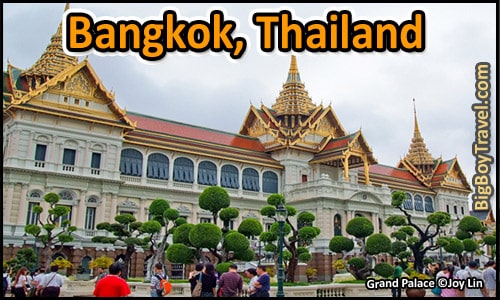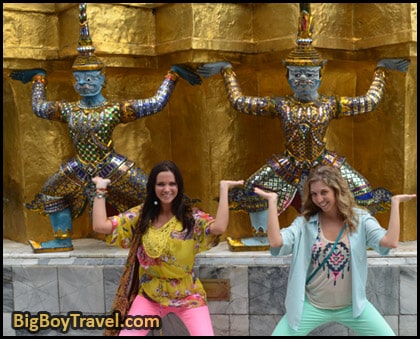Asia > Thailand > Top Things To Do In Bangkok
Bangkok Thailand Travel Guide:
Officially Founded: 1782 A.D.
Suggested Stay: 4-5 Full Days
Sawadee Krap (Hello) and welcome Bangkok, the gateway of all things Thai. Some visitors are scared off by the size and grandeur of Bangkok, but it is a historic city that offers a little bit of everything. Expect that the City is going to be loud, it’ll be crowded at times, and maybe even a little bit dirty, however, these things actually make you appreciate Bangkok even more.
It seems that every time we get a little bit frustrated with the negatives of Bangkok we stumble upon an amazing festival, run into a new shrine that was hidden, or capture something with our camera straight out of National Geographic. To put it into perspective, there aren’t many places in the world where you can go right from watching the sunset over a 700-year-old temple to metropolitan rooftop bar within minutes. While they can be exhausting, the diverse experiences in Bangkok always make us feel like we just visited somewhere magical.
Explore Bangkok By Neighborhood:
3. Silom Area Walking Tour
4. Dusit Walking Tour
5. Siam Square Walking Tour
6. Mid Town Walking Tour
Best Festivals In Bangkok:
Brief History of Bangkok:
The originally Siamese capitals were in the Northern part of modern-day Thailand leaving the area of Bangkok open for sparse Khmer and Chinese settlements. By the 1500s the Thais established Olive Town (Bang Makok) inside of a large horseshoe bend created by the Chao Praya River. The river was straightened in 1542, but Olive City continued to slowly grow until King Taksin made it the Siamese capital of Thornburi in 1767. His reign only lasted 15 years giving way a new Royal family under King Rama I. The new King, whose family still holds the figurehead throne today, moved the capital across the river to what is now Old Town (Rattanakosin) in 1782.
As the city grew the former named were shed and the area as a whole became known as Bangkok or Island City (Bang Ko). Many early influences on the City came from both French and Chinese immigrants creating a strong and unique culture. Over the centuries Bangkok has become even more of a melting pot and sea of Sky scrappers, but the overlying Thai elements remain strong. Nation pride runs very strong and the distinct neighborhoods provide the proper blend of modern poshness and old world charm.







